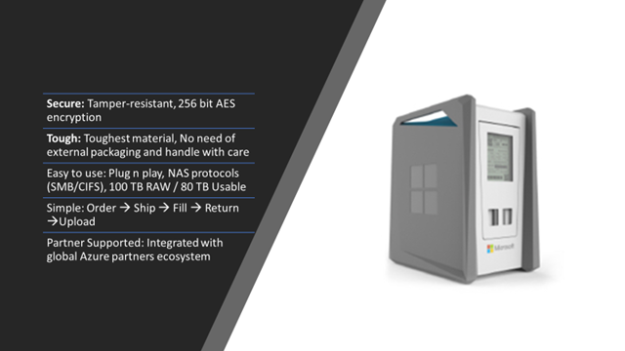Cloud has become a prominent option for all kind of organizations. When any medium to large organization moves to the cloud, data transfer becomes a biggest challenge. To address this concern, Microsoft provides different types of data transfer options to the customers. Before you get into the details of data transfer options, answer the following questions:
- How much data, we need to migrate?
- What is going to be the frequency of data transfer?
- Data source and destination locations, and respective data regulations?
- Find the bottlenecks that may arise at the time of migration?
- Do the cost, time and effort comparison between possible data migration types?
If you look from the Microsoft point of view, they have divided the data transfer into four major categories:
- Physical data transfer
- Data transfer using command line tools and APIs
- Data transfer using graphical user interface
- Data pipeline
Let me explain you briefly about each one of the data transfer methodology:
Physical data transfer: Widely used when you have large data sets to migrate. It could be leveraged for either one-time data migration activity or for less frequent data migration activity. For physical data transfer you can choose one data methodology based on the size.
- Azure Import/Export: The Azure Import/Export can be used to transfer large amount of data using internal SATA HDDs or SSDs. By using this service, you can securely transfer data from on-premises to the cloud blob or file storage and vice-versa. When procuring drives for this service, don’t get confuse between SATA and SAS drives. Order SATA III drives as it is faster than older version of SATA drives and support speed of 6 Gbps.
- Azure Data Box: Azure Data Box is an option to transfer very large amount of data, it is very similar to Azure Import/Export but avoids the hurdles of procuring, writing and sending multiple data disks. In this service, Microsoft provides you secure and reliable appliance to transfer data between on-premises and cloud blob and file storage. It is much easier than Azure Import/Export service as Microsoft takes the responsibility of end-to-end logistics.
Data transfer using command line tools and APIs: used when you have enough bandwidth available to migrate limited amount of data between on-premises and cloud blob and file storage. There are multiple tools available to perform this activity.
- AzCopy: It is command line to tool to transfer data to and from Azure blob, file and table storage in fast, secure and reliable manner. You can install this tool on Windows or Linux machine to transfer data. It supports parallelism and the ability to resume copy operation when interrupted.
- Azure CLI: It is a command line tool to manage Azure services and to upload data to Azure storage. Azure CLI doesn’t need any installation and configuration as it is available through Azure portal itself.
- PowerShell: PowerShell is an alternative option for windows administrators to transfer data.
Data transfer using graphical user interface: is a most simpler way of transferring data between cloud on-premises. You have two options available to transfer data using graphical tools.
- Azure Portal: Simplest way of exploring and uploading files to the Azure blob storage and data lake store but it has a limitation of exploring and uploading only file at a time.
- Azure Storage Explorer: Azure storage explorer is a great option for GUI lovers, it provides a capability to manage, upload and download files through interactive interface for blobs, files, queues, tables and Azure Cosmos DBs objects. It also allows to manage data between blob storage, and between storage accounts.
Data Pipeline: used when you need to transfer data regularly.
- Azure Data Factory: It is an option to transfer and transform data using data-driven workflows (a.k.a data pipeline) on a regular basis by leveraging orchestration or automation processes. It is a managed service to transfer data between Azure services, on-premises, or a combination of the two. The workflow can be created and scheduled based on your requirements. It can process and transform the data by leveraging compute services such as Azure HDInsight Hadoop, Spark, Azure Data Lake Analytics, and Azure Machine Learning.
Apart from the above core data transfer options, following are the list of tools that can be leveraged to transfer data within specific Azure services.









